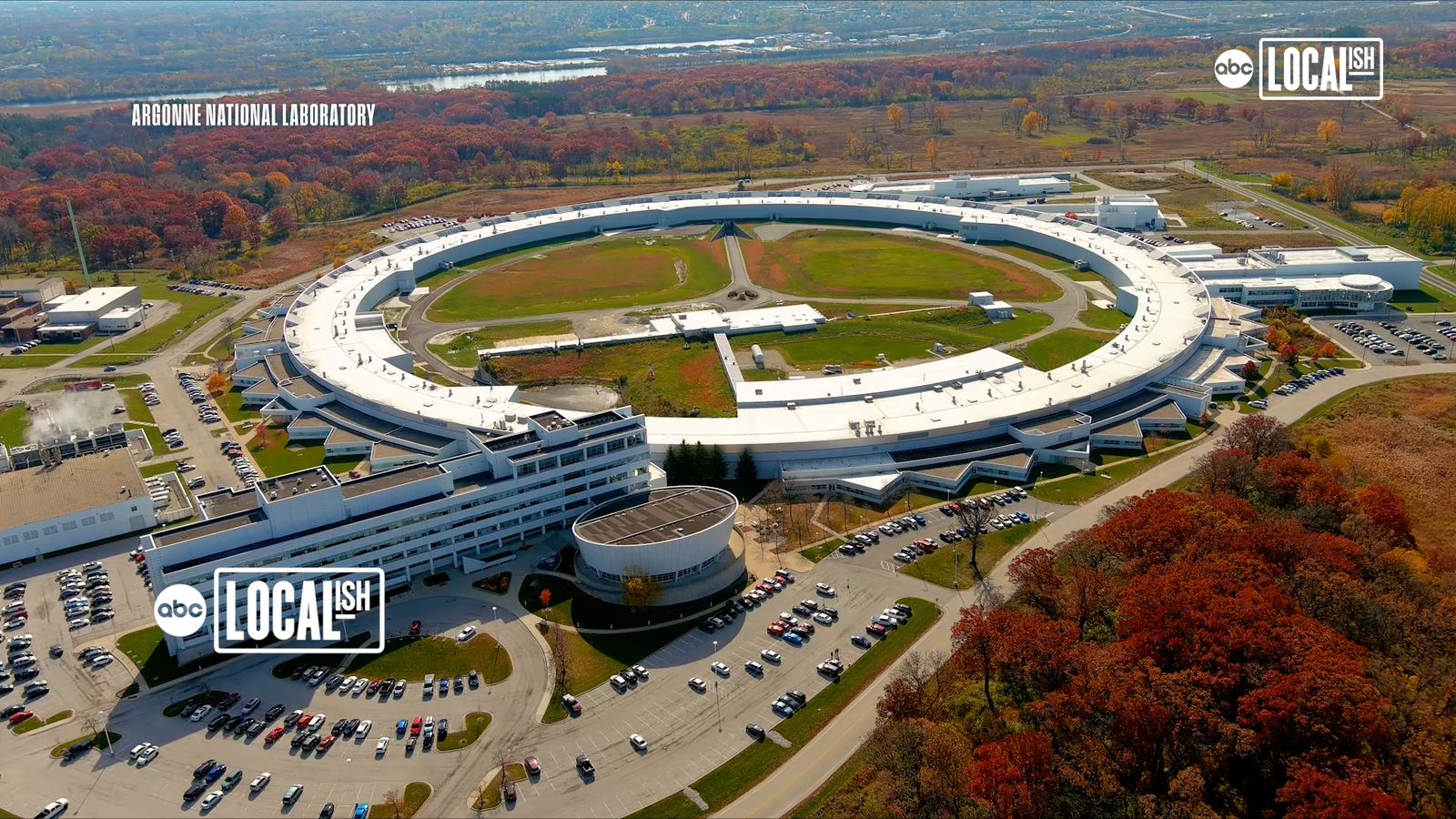LEMONT, Ill. — When scientists at Argonne National Laboratory describe the new Aurora supercomputer and upgraded Advanced Photon Source user facilities, they tend to use superlatives.
“Aurora is massive,” said Katherine Riley, the director of science at Argonne. “Think of it as 10,000 computers that are all talking to each other very, very quickly.”
“Think of the Advanced Photon Source as a giant microscope,” said Laurent Chapon, the director for photon sciences at Argonne. “It’s a giant X-ray microscope. You know, a little bit like what you have in a medical setting, but a billion times brighter than that.”
Together, the two cutting-edge scientific instruments are poised to revolutionize research across a wide range of fields, from materials science and medicine to climate modeling and energy.
This year, Argonne, the federally funded research and development center in Lemont, Illinois, is ramping up usage of the two dynamic scientific tools. Aurora was introduced earlier in 2024, while the APS was launched this year, as well.
Now, the U.S. Department of Energy-operated facility is inviting researchers to take advantage of the groundbreaking technology. Those invitations began earlier this year, and are now being extended in earnest this fall.
“We’ve had very successful projects already that have run between the advanced photon source in Aurora, where experiments are going on,” Riley said. “Researchers have been coming in from a wide range of fields. You have astrophysics and biology, chemistry, material science of multiple different types and engineering research. And it’s all just incredibly exciting.”
Aurora was fully installed at Argonne in 2023. One of the world’s most powerful supercomputers, it is capable of performing over a quintillion calculations per second. This spring, Argonne announced that it broke the exascale barrier, and is now the fastest and highest-ranked supercomputer in the world for high performance computing and artificial intelligence convergence.
SEE ALSO: NASA spacecraft collision may have created a meteor shower that will last for 100 years
Its immense processing power will enable researchers to tackle complex simulations and data analysis tasks that were previously infeasible.
“With Aurora, calculations are being applied to problems that we’re interested in solving,” Riley said. “So when we look at problems like energy efficiency, when we look at challenges like renewable energy or better medicine for various different diseases, when we look at ideas of climate change and understanding climate, these are the types of problems, among others, right, that we can solve with this system.”
Aurora will be extracting data from the Advanced Photon Source, which was upgraded in the summer of 2024.
The APS, which is housed in a ring so large that Wrigley Field could fit in its entirety inside, will generate X-rays that are up to 10 times brighter than its predecessor, allowing scientists to study matter at unprecedented levels of detail.
By combining the capabilities of Aurora and the APS, researchers will be able to investigate the structure and properties of materials with unprecedented precision.
One of the most exciting areas of collaboration between Aurora and the APS will be in the field of materials discovery.
By using Aurora to simulate the behavior of different materials under various conditions, scientists can identify promising candidates for further study. The APS-II can then be used to characterize these materials experimentally, providing valuable insights into their properties and potential applications.
“It’s transformative for science,” Chapon said. “We can use the power of this giant X-ray microscope to probe very deep into matter and understand some very fundamental scientific question. It will have a direct impact on not only science, but also on society.”
The unveiling of Aurora and the APS-II marks a significant milestone for Argonne National Laboratory and the scientific community as a whole. These powerful instruments are expected to drive innovation and discovery for years to come.
Argonne officials say private and government-funded research will be done with the combined forces of Aurora and the APS.
“We’re a national user facility, so that means that anyone can apply to use this,” Riley said. “You don’t have to be funded by the Department of Energy. You don’t have to be funded even by the federal government. You can be a private researcher. You can be even foreign. (Aurora and APS) went through a lot of iterations, a lot of re-imaginings. And so, to see it finally active is a huge relief. It has really come right as we’re making this huge transition in science, with deep learning and artificial intelligence. So, these new innovations allow us to transition from problems that we did not think we could tackle, to problems we might be able to tackle.”
